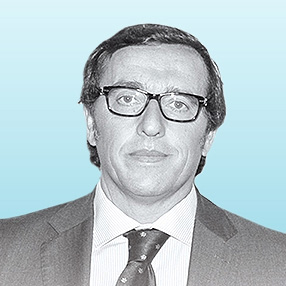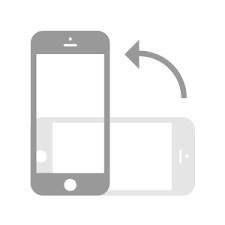
At Gonvarri Steel Services, we know that people are our most important asset.

At Gonvarri Steel Services, we know that people are our most important asset. For this reason, safety and health are a priority and we have a culture of prevention that guarantees good performance at all of our centers. And we are also aware that outside our factories challenges exist in terms of safety that we can help to improve. Taking care of our people is part of our corporate culture. To give priority to people over numbers, to put people before the bottom line.
And this is so and should be so, especially at a company like ours. Because Gonvarri’s industrial activity involves certain risks at the workplace, for which all of the necessary preventive measures must be established. Only in this way will we be able to eliminate them, or at least reduce them as much as possible. And for this, the involvement of everyone who forms part of Gonvarri is necessary, from the first to the last. President, general managers, managers, heads of departments, workers, collaborators… All united without exception in a common cause that affects us all.
In 2007, we carried out a global study about the state of health and safety at the company. Faced with the question, “Why are there accidents at Gonvarri?” we reached the conclusion that three basic causes existed: THEY CANNOT (lack of capacity or means), THEY DON’T KNOW HOW (lack of knowledge and experience), THEY DON’T WANT TO (lack of motivation, over-confidence, daring attitude). As a result of that study and the information it provided, we detected the need to create and strengthen a culture of awareness and prevention in all areas of the company. To consider safety as an essential requirement was the most effective way to avoid accidents, incidents and carelessness at work. Although we were reducing the number of accidents at the time, this wasn’t happening in a homogenized way and the most worrying thing was that although spending had been requested to recondition sites and equipment, no importance was being given to the human factor or to following regulations.
Thus, in 2011, we launched the program “A Step For- ward”, a global plan to encourage the culture of prevention at work; and also outside of work, in our daily life. It was not only a question of creating a sense of prevention in people, but also of involving all of the members of the organization, regardless of their rank. And the same level of commitment and respect for regulations was demanded of everyone, both management and workers.
Four lines of activity were developed to reach these goals: creating better health and safety conditions to reduce risks at the point of origin; integrated systems of management throughout the hierarchy to make sure everyone knew what they had to do to con- tribute to safety; the training of all the employees about risks and regulations; and the raising of awareness about how important it was for the company and people to follow the existing safety regulations.
In respect to this last point of raising awareness – of key importance, because it is the stage the closes the circle – different activities have been realized at the factories that aim to transmit in a participatory, positive and fun way, the importance of safety in all areas of life: work, personal, family and social. The World Day for Safety and Health, the Healthy Habits program, the Travellers Backpack platform and the Emotional Driving Challenge are four successful examples of this approach.
The World Day for Safety and Health initiative consisted of a competition of photographs in which the subject was to portray each of the “10 Commandments of Safety and Health” that are defined on a group level. The idea consisted of creating a network of prevention among the workers at Gonvarri, which would generate a real chain of images, which had to include at least two people representing one of the company’s 10 commandments of safety and health. The goal was prevention in a chain reaction: “I take care of my colleague, he takes care of his colleague, and he takes care of his, and so on”; and at the same time, the idea was to disassociate prevention from the idea of imposition, encouraging instead a movement among colleagues: “Before starting to work, I don’t think only about my own safety, but also that of my colleague”. To reinforce the idea that the true safety net, the most effective one, is made up of people. To incentivize participation, a specific platform was created, Leading The Change, and weekly awards and recognitions were given, along with a big final prize, to the individuals and factories that sent the most photos.
The results amply surpassed the predicted participation: almost 3,000 photos were received from all of the factories (with large doses of humor, originality, brilliance and companionship), from all of the countries (the United Kingdom, Brazil, Poland, USA, Russia, Turkey, Colombia, Portugal, Argentina, Germany); and, furthermore, there was massive employee participation when it came time to vote for the final awards: a total of 15,500 votes were cast. Success lay not only in instilling the content of those basic commandments in employees, but also in the fact that people participated in a positive and thrilled way, strengthening group spirit and connecting factories around the world around the subject of safety.
Another successful initiative has been the program Healthy Habits, designed to encourage physical activity both on an individual and collective level, as well as healthy behavior in our lives. On the one hand, this was done by facilitating the practice of sports: subsidized sporting activities, gymnasiums at the offices, tournaments between teams. And in such different disciplines as cycling, field and track, tennis, paddle- ball, motorcycling excursions, football, basketball… to reach all types of audiences. In all of these activities, participation has been enormous, groups have been created on the intranet and new companions have been found with the same interests.
Similarly, a healthy diet has been encouraged, with daily articles on interesting subjects such as healthy foods or organic agriculture, the keys to sleeping well, how to take care of your heart… as well as the Healthy Habits course at Leading The Change University.
With the Travellers Backpack the aim has been to develop this culture of prevention among employees who have been sent, whether temporally or permanently, to work in other countries. Countries with risks, with insecurities of very different types (physical, legal, health), with different customs and cultures, etc. A multi-channel space has been created where practical information and advice is gathered (procedures and documents, risks associated with the place, insurance policies, sociocultural and political information, maps with hospitals, embassies, Gonvarri factories…; as well as advice in case of theft or emergency, and a space to share experiences). All with a single aim: so that the people traveling feel safe and protected at all times.
The results of these initiatives have been very good in terms of frequency and seriousness. Important landmarks have since been achieved in the evolution of figures concerning accidents over these past years. The factories are aware of this, given that all of them each year break records of days without accidents.

The most important thing, however, is that the workers have understood that safety is a non-negotiable requirement at Gonvarri, and they value the efforts made by the company in terms of both investments made to eliminate dangers and risks, and in raising awareness and encouraging prevention of those risks and dangers.
But while these three initiatives have been deservedly successful, the unquestionable star is Emotion- al Driving. Because when we talk about traffic, we are talking about work accidents with capital letters, of figures that dwarf any other cause of accident. One out of three fatal work accidents is caused by traffic; of these, most occur during the commute by employees to their jobs (about 60%), or in journeys between places of work or derived from their own activity. According to the DGT, in addition to these figures, 191 road accidents occur each day which result in people being unable to come to work (also counting Saturdays and Sundays), and 10% of work accidents that keep employees from working are due to traffic. Keeping in mind these figures, these accidents, the involvement of companies is absolutely necessary and urgent; it’s a question of responsibility regarding their employees and society. And in the case of Gonvarri Steel Services, it is unquestionably a constant concern and a priority.
Through Emotional Driving, we have wished to rein- force our commitment to the Safety and Health of our employees. It is an initiative that began in 2014 and is the result of collaboration with AESLEME, and aims to improve and increase our efforts of encouraging the culture of prevention in the area of safety. We are aware that all of our employees commute to work and we consider it important to encourage them to do so in a safer way.
The project is, furthermore, perfectly aligned with the triple bottom line and with our strategic aims, thanks to a combination on three levels:
Gonvarri Steel Services has decided to assume this responsibility, to try to lessen the risks and to spare no efforts in raising the awareness of our employees and of society about the importance of not taking risks when our life or that of others is at stake. This is our goal, to try to minimize the number of accidents and contribute to saving lives.
Emotional Driving, definitively, is the firmest commitment to our values, to our people, to those around us. Unquestionably, three of our most valuable assets.


Pablo González de Suso
HR Director Gonvarri Industries

Por favor, gira tu móvil para navegar